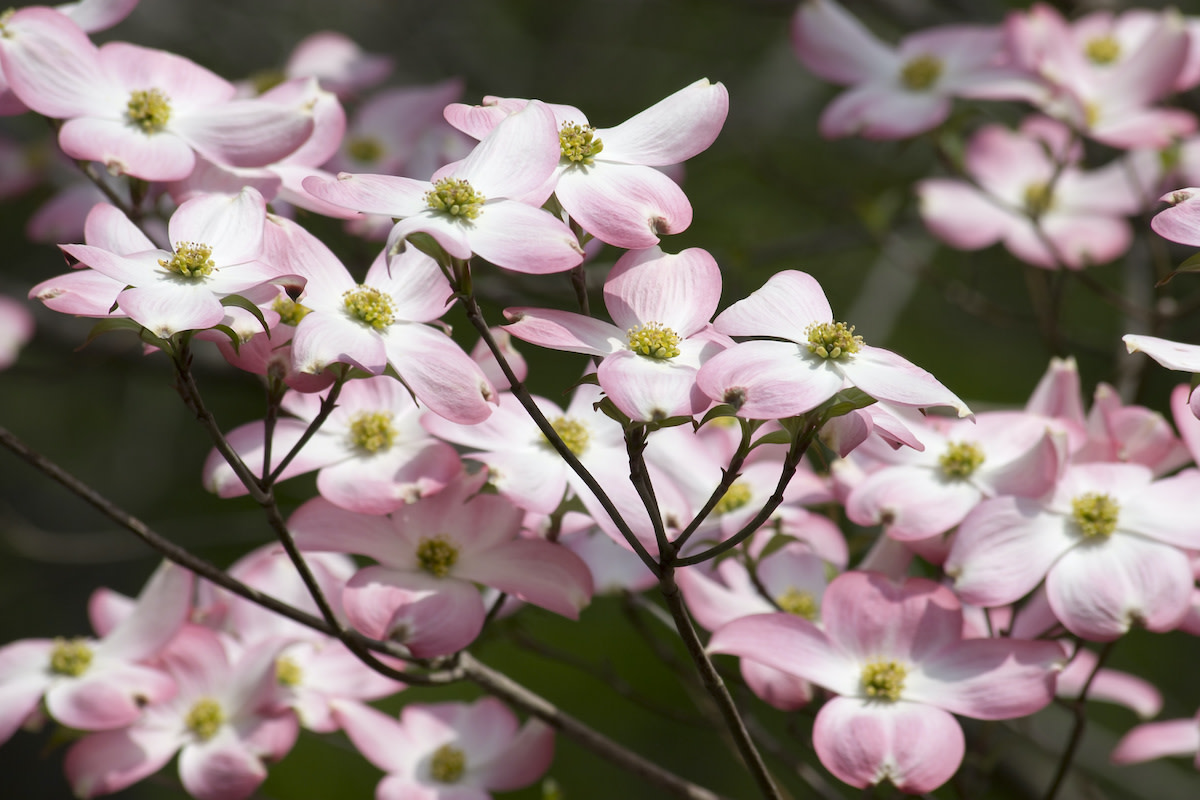10 Types of Dogwood Trees: Flowering Dogwoods
Written by MasterClass
Last updated: Dec 16, 2021 • 3 min read
Dogwoods pepper North American, Asian, and European landscapes. These ubiquitous trees come in a wide array of looks and styles. Learn more about the different types of dogwood trees to see which might fit best in your garden.
Learn From the Best
What Are Dogwood Trees?
Dogwoods are deciduous trees descending from the Cornus genus and the Cornaceae plant family. They often sprout white, yellow, or pink flowers alongside vibrant green foliage. Dogwood trees vary in height and width—some grow upward of fifteen feet, while others look more like small trees or large shrubs. Give them full sun or partial shade to help them flourish.
Where Do Dogwoods Grow?
Dogwood trees grow across Asia, North America, and Europe. In the United States, people import certain foreign dogwoods because of their increased disease resistance. Chinese, Japanese, and Korean dogwood trees fight off ailments like dogwood anthracnose and powdery mildew better than their North American counterparts.
As for preferred climate conditions, most dogwoods grow comfortably in the range of USDA Hardiness Zones 3–9. For those outside the United States, this means many dogwoods do best in winter temperatures as low as negative thirty degrees Fahrenheit and as high as thirty degrees Fahrenheit. Certain species of dogwood might thrive in colder or hotter Hardiness Zones.
10 Types of Dogwood Trees
There are many different types of dogwood trees, which showcase unique differences in foliage, flowers, and berries.
- 1. Canadian bunchberry dogwood: These trees sprout small white flowers, dark green leaves, and bright red berries for a showy combination overall. The flowers come first in early spring and the berries follow them in midsummer to late summer.
- 2. Common dogwood: Although its botanical name is Cornus sanguinea, its common name of “bloodtwig dogwood” is more descriptive. This references the common dogwood’s red stems, which slowly change color to green as time proceeds.
- 3. Cornelian cherry dogwood: Also known by the common name of “European cornel dogwood,” Cornus mas sprouts edible red fruits you can use in jams and other recipes. Although many dogwoods sprout berries and fruits, not all are edible or as tasty to humans as those of the Cornelian cherry.
- 4. Flowering dogwood: Don’t let the botanical name of Cornus florida fool you. C. florida, or flowering dogwood, is actually the state tree of North Carolina. These flowering trees boast vibrant white or bright yellow flowers with prominent bracts. They grow best in slightly acidic soil.
- 5. Gray dogwood: This dogwood species looks more like a shrub than a tree. Some refer to it as the northern swamp dogwood because of its presence in the northeastern United States and Canada.
- 6. Kousa dogwood: Though this dogwood’s botanical name is Cornus kousa, some nickname these C. kousa trees as “Chinese dogwood” or “Japanese dogwood” trees. Many in North America import these trees from China and Japan because of their increased disease resistance compared to the continent’s native dogwood trees.
- 7. Mountain dogwood: Mountain dogwood, or Pacific dogwood (Cornus nuttallii), trees pop up all over the northwestern landscape of North America. Beginning in the late summer, they light up Northern California, Oregon, Washington, and British Columbia with their fall color.
- 8. Pagoda dogwood: As its botanical name, Cornus alternifolia, suggests, the spring and fall foliage on this tree alternates on any given stem rather than growing in parallel. Mulch these trees to help them grow to their full potential.
- 9. Red osier dogwood: Some prefer to forgo the designations red osier dogwood or Cornus sericea and opt for red twig dogwood. Though they may sprout red twigs, these trees stand out just as much for their white drupe berries and occasionally variegated foliage.
- 10. Siberian dogwood: This Siberian or white dogwood boasts green foliage and flowers with white bracts in spring and red stems in the summer. Its shifting appearance makes for a kaleidoscopic addition to your yard.
Learn More
Grow your own garden with Ron Finley, the self-described "Gangster Gardener." Get the MasterClass Annual Membership and learn how to cultivate fresh herbs and vegetables, keep your house plants alive, and use compost to make your community—and the world—a better place.
